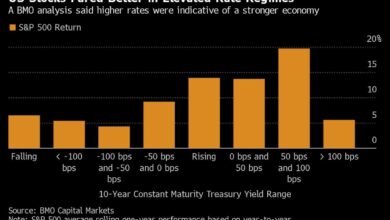The secret to getting more done at work—and home—according to Google’s productivity expert

If there’s one thing I’ve learned from leading productivity workshops, coaching executives, and being a parent, it’s that people love routines. Whether it’s an annual holiday tradition, a monthly movie night, a weekly favorite meal, or simply a bedtime ritual, routines create rhythm in our lives, and this rhythm is something we can capitalize upon.
A 2006 Duke University study found that approximately 45 percent of our daily behaviors are habits. While there’s a huge trend these days on forming or stopping habits (things you do without thought), I like to focus on creating routines (natural next-step actions) instead. Habits require motivation, whereas routines flow naturally with intention.
Starting your week by saying I have to cook dinner every single night feels overwhelming and like you’re not sure where to start. However, by thinking in themes—Meatless Monday, Pasta Tuesday, Soup Wednesday, New Recipe Thursday, and Takeout Friday— suddenly the meals task feels less daunting. I’ve narrowed the scope of the activity, and now I have some structure to help me figure out what to do. I don’t have to stick to this structure all the time—maybe one Wednesday I don’t feel like cooking and order takeout instead. Or maybe I have a particularly busy week and don’t have the energy to try a new recipe on Thursday. Implementing this schedule to any degree will help make my weeks of cooking dinner smoother.
You want to think of how these types of routines can benefit your work and personal life. Theming your days. Creating a weekly flow and daily flow to your schedule. And when you have something that you want to fit into your schedule—like learning piano—don’t count on yourself to pick a good time and find a way to do it. Create a routine that helps you make room for it easily.
Make it stick
I call these types of routines when:then. To create any new behavior we have to create a trigger for actually doing it, or it always stays as something we’ve been “meaning to do.”
I’ve played piano for twenty years, but I had a goal of wanting to learn new songs. Because I had taken lessons for over a decade, I didn’t really need new instruction—I just needed the time, and the push, to do it. For many people that someday timeline never happens and turns into I’d really like to or I’ve been meaning to. Many times big lofty goals, creative projects, and self-care slip into those meaning to do categories. Those are the things that are most important to create a when for.
When it came to identifying the “when” for learning new songs on the piano, I knew that evenings would be my best time to practice, because the kids were sleeping then and didn’t need my attention. Next I had to find the “when” that would be my reminder to do it. I decided that every single night I put my kids to bed, when I walked out of my daughter’s room, then I would walk straight to the piano.
At first I just walked straight there, played a song I already knew, and left. Sometimes it was only five minutes or less. I didn’t allow myself to walk downstairs and see things I could be cleaning or start a TV show. Soon it became second nature. I acted like my own assistant and set out new sheet music in the morning, hoping that would prompt Future Me (that evening) to learn something new. My husband started to realize that I was going to do that every night, so he started to do his own thing right after our kids’ bedtime, knowing that I wouldn’t be ready to watch a show or play a board game together until I was done. It really stuck as a routine and became part of the daily rhythm. The progress happened only because I originally attached the new routine to directly follow my daughter’s bedtime (which I know I will be doing every night).
Results of a study published in the European Journal of Personal Psychology in 2009 showed that the average time it takes for a new behavior to become automatic is sixty-six days. But you may find, as I did, that with a solid when:then it happens much faster, because I had the same trigger (bedtime) every single night.
You can choose a specific time, action, day or trigger for your routine. Some of the other when:then routines I have that might inspire you:
- When our monthly team meeting happens: then I spend thirty minutes afterward to put notes in my annual review folder about what I’ve been working on.
- When it’s Monday: then I do laundry for everyone in the house and dump it right on my bed so I can’t go to sleep that night until it’s put away.
- When I go to the grocery store: then I take any of my extra recycling and drop it off at the recycling center next door.
- When it’s time to send my weekly update for my boss: then I also quickly check my Revisit email folder to see if I’m missing anything from the week.
- When there are five minutes until dinner is ready: then I set a five-minute timer and tell my kids to clean up their toys and books before dinner.
- When it’s Tuesday: then my family and I participate in a no-technology routine from dinner to bed
- When it’s July 4 or New Year’s: then I do anything I want to do every six months like replace filters in my house, replace mascara, wash couch cushions, and a whole bunch of other things. (I have a big six-month list.)
- When it’s my birthday week: then I schedule any annual doctor appointments I need, like an eye exam or physical.
Routines get things off your plate and out of your brain because you’ve reserved an exact time and place for them later. I could be haunted by needing to wash my outdoor couch cushions sometime, all the time. Instead, I use minimal energy points and think of it only twice a year because I’ve set an exact time for it every six months and I trust my system. I don’t catch myself wondering, When was my last eye exam? I know it was last December because it’s always the week of my birthday. These cadences and routines stick—and they make life easier and more enjoyable.
Memory attachments
You can also use when:then association as a single-instance mnemonic device. Let’s say I’m lying in bed at night before I leave for a trip, and I remember something I forgot to pack. I envision myself doing something I know I will do in the morning, and then immediately envision that version of Future Me remembering what I need. Think, When I grab the keys off the hook, then remember I need my phone charger, three or more times. The next morning when I go to grab my keys, that association has been made so effectively that the image of my phone charger pops into my head. Attaching something to something else ensures that it doesn’t get forgotten.
Another way to use when:then is when deciding where to place things in your home or organizational system. Let’s say you’re not sure where to store your tape in your house. Imagine that item was lost; the first place it pops into your mind to look for it is where you should store it in the first place. So imagine your roommate said to you, Hey, I can’t find the tape, do you know where it is? What is the first place that pops to your mind to go check for it? That should be the place you store it! You’re first testing the when I need the tape, then I look here connection your brain has already made and then using it to your advantage to put it in its natural place.
Take advantage of natural starts
In addition to grouping things that happen daily, weekly, monthly, annually together to make life easier, you can take advantage of beginnings, too. In When: The Scientific Secrets of Perfect Timing, Daniel Pink talks about avoiding false starts by using the power of temporal landmarks for making fresh starts. Like Monday, the first day of the week, the first of a month, the first day on the new job, or a new year. Our brains are wired to think of these as new beginnings. We want to take advantage of that. You are much more likely to stick with a routine if you start it on a Monday instead of a Thursday or Friday. Making routines and using the when:then model removes the stress and anxiety of remembering to perform tasks before we’ve even done them. It helps us find the actual time and space to accomplish those “one day” things we’ve been wanting to do. When there is more of a routine and cadence, there is less distraction, and more mental space for doing the things we want and need to do.
From the book UPTIME by Laura Mae Martin. Copyright © 2024 by Laura Mae Martin. Reprinted by permission of HarperCollins Publishers.
Source link




